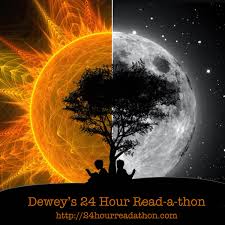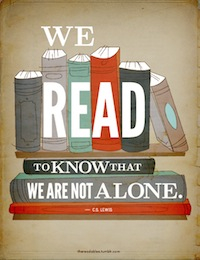Reading is not an activity that should be limited to English class. Rather, it should be embedded in content area curriculum in a way that sharpens students’ literacy skills and their subject-area knowledge simultaneously. Some content-area teachers may feel that it is counter-productive to focus on literacy in their classrooms; however, studies have shown that students who learn specific reading skills for content-area materials (i.e.–strategies for reading historical documents, science texts and lab studies, and/or convoluted word problems in math) will not just become better readers. They will improve in each of those subjects as well! Their sharpened reading skills will help them become better overall learners, and help them to better read their textbooks and improve their grades across the board. Here are some materials that may be useful for integrating reading into the content areas:
Math
Marvelous Math by Lee Bennett Hopkins–Poetry that links to different mathematical concepts (lower level).

Math Talk: Mathematical Ideas in Poems for Two Voices by Theoni Pappas–A great way to integrate math curriculum with reading fluency.

The Number Devil: A Mathematical Adventure by Hans Magnus Enzensberger–The narrative of a young boy’s Alice-and-Wonderland-esque adventure through a numerical, mathematical landscape.

History
We the People by Bobbi Katz–Poetry about American history, spanning from “The First Americans” to “Imagine,” a poem about the future ahead of us in the twenty-first century.

Lives: Poems About Famous Americans by Lee Bennett Hopkins–Great for giving a more intimate, personal perspective to biographical history lessons.

The Brother’s War: Civil War Voices in Verse by J. Patrick Lewis–A good accompaniment to a study on the Civil War; helps students to see the perspective of both sides.

War and the Pity of War edited by Neil Philip–An anthology of poetry written about the horror and heroism of war, spanning in time from 11th century B.C. to present day.

Remember the Bridge: Poems of a People edited by Carole Boston Weatherford–A striking collection of poems and photos that cover over 400 years of African Americans struggling for freedom.

I Never Saw Another Butterfly edited by Hana Volavkova –A collection of poems and drawings created by children in the Terezin concentration camp from 1942 to 1944. This is the legacy of an estimated 15,000 children who passed through this camp on their way to Auschwitz.

Eyes of the Emperor by Graham Salisbury–A piece of historical fiction detailing a young Japanese American’s account of the Pearl Harbor attack, and the prejudice that he endured from his fellow Americans during the aftermath.

Hiroshima No Pika by Toshi Maruki–A piece of historical fiction detailing a Japanese woman’s account of how she survived the bombing on Hiroshima.

The Man From the Other Side by Uri Orlev–A novel based on the true story of a Polish boy living in the 1940’s named Marek who hated the Jews, until he ends up befriending a Jewish boy his own age and helping him hide from the Nazis.

Red Moon at Sharpsburg by Rosemary Wells–A piece of historical fiction detailing the life of a young Southern girl named India and her perspective on the Civil War that threatens to destroy her family and her Virginia home.

Geography
My America: A Poetry Atlas of the United States by Lee Bennett Hopkins–A collection of 51 poems written by 40 different poets. A literary exploration of geography, climate, and people across America.

Got Geography! by Lee Bennett Hopkins–A collection of poetry written by a variety of well-known authors who are enamored with the idea of travelling the globe. These poems are great for pulling out to introduce a unit on a particular geographic region.

A World of Wonders: Geographic Travels in Verse and Rhyme by Patrick J. Lewis–A book of fun, quirky poems about exotic destinations and fun geography trivia.

Science
Redwoods by Jason Chin–A picture book may seem juvenile; however, this book is packed full of facts and trivia about Redwood trees that can be appreciated by all ages.

Ubiquitous: Poetry and Science About Nature’s Survivors by Joyce Sidman–This book pairs well-researched scientific facts with poetry to celebrate the micro-organisms and other “underdogs” of evolution who have managed to thrive throughout time. Sidman is the author of several scientific poetry/picture books that are suitable as introductions and/or supplements to science units.

Art
Heart to Heart and Side by Side edited by Sandra Jordan–Two compilations of poetry written about seeing and reacting to famous works of art.


Talking to the Sun by Kenneth Koch and Kate Farrell–Another poetry anthology in which poems are matched to corresponding paintings.

English
Vocab Rock! Musical Preparation for the SAT and ACT (with CD) by Keith London and Rebecca Osleeb–The audio CD that accompanies this book is full of hip hop and alternative music that makes use of difficult vocabulary words in its lyrics. Activities and worksheets to guide the students’ understanding of the new words and their contexts is provided in the book. What a great way to study for a standardized test!

Eats, Shoots and Leaves: The Zero Tolerance Approach to Punctuation by Lynne Truss–A witty argument for the continued use of proper punctuation, and the hilarious consequences and shifts in meaning that occur with punctuation is neglected.


































